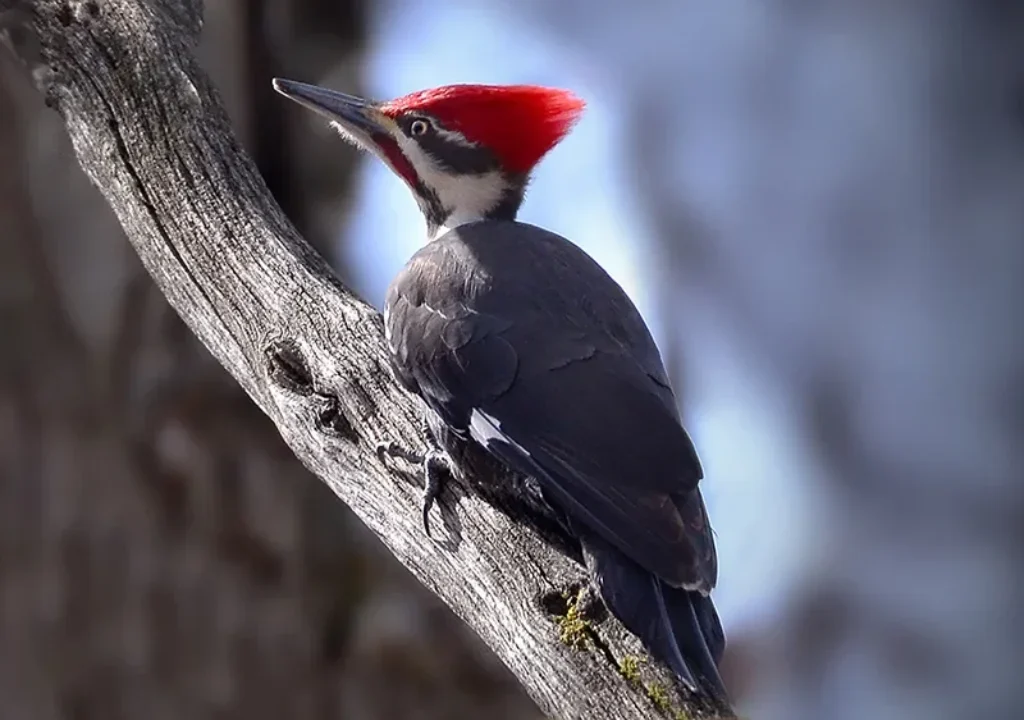The red-headed woodpecker (Melanerpes erythrocephalus) is among the most visually striking birds in North America, instantly recognizable by its bold red head, black wings, and white belly. This medium-sized woodpecker isn’t just known for its looks — it’s an acrobatic flyer, skillful forager, and plays an important role in forest ecosystems.
Introduction to the Red-headed Woodpecker
The red-headed woodpecker is a unique bird known for its vividly colored head and striking flight patterns. Native to temperate parts of North America, this woodpecker has intrigued bird watchers and ecologists alike due to its specialized behaviors and adaptability.
Scientific Classification and Status
- Common Name: Red-headed Woodpecker
- Scientific Name: Melanerpes erythrocephalus
- Family: Picidae
- Genus: Melanerpes
As of 2018, the red-headed woodpecker was downgraded from “near threatened” to “least concern” on the IUCN Red List, although population declines persist in certain areas.
Physical Characteristics
- Medium-sized, about 7.5–9.1 inches (19–23 cm) long
- Brilliant crimson-red head
- Glossy black back and wings
- Bright white underparts and wing patches
- Strong, pointed beak for pecking and drilling
Males and females appear identical, making them a rare example of non-dimorphic birds.
Habitat and Geographic Distribution
Red-headed woodpeckers are found in:
- Southern Canada
- Eastern and central United States
- Open woodlands, orchards, forest edges, and pine savannas
- Dead trees or snags for nesting
They are commonly seen in states like Illinois, Minnesota, and Missouri, with some populations staying year-round.
Diet and Feeding Behavior
These birds are omnivorous, feeding on:
- Insects: beetles, grasshoppers, spiders, earthworms
- Fruits: berries, cherries
- Nuts: acorns, beech nuts
- Occasionally small rodents and bird eggs
They are known for their ability to store food, stuffing it into crevices for later use—an uncommon trait among woodpeckers.
Breeding and Nesting Habits
- Breeding season: Late spring through early summer
- Nest in cavities of dead or decaying trees
- Lay 4–7 white eggs per clutch
- Both parents incubate and care for young
These birds are aggressive defenders of their nest cavities, often fending off squirrels and other birds.
Seasonal Behavior and Migration
While some red-headed woodpeckers are year-round residents, many northern populations migrate south for the winter, especially when food sources like acorns are scarce.
Conservation Status and Threats
- IUCN Red List: Least Concern (since 2018)
- Threats include:
- Habitat loss from logging and agriculture
- Pesticide use, reducing insect populations
- Competition from starlings for nesting sites
Conservation efforts focus on preserving dead trees, promoting natural habitats, and monitoring populations.
Red-headed vs. Red-bellied Woodpecker
| Feature | Red-headed Woodpecker | Red-bellied Woodpecker |
|---|---|---|
| Head Color | Entirely red | Red crown and nape |
| Belly Color | Bright white | Pale red-tinted belly |
| Range | Central & Eastern U.S. | Eastern & Southeastern U.S. |
| Behavior | Food caching, aerial foraging | Tree climbing & pecking |
FAQs
11. Conclusion
The red-headed woodpecker is more than just a flash of color in the trees—it’s an intelligent, resourceful, and important part of North America’s woodland ecosystem. Whether caching acorns or performing mid-air acrobatics, this bird reminds us of the beauty and complexity of avian life.
Photographers, birders, and conservationists alike are drawn to the red-headed woodpecker—not just for its looks, but for the essential role it plays in our shared environment.

